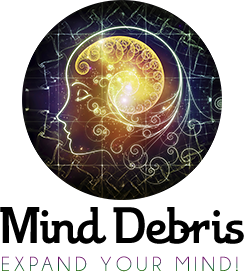LSD Brain: Lysergic Acid Diethylamide on the Brain
[Please note that this page contains affiliate links. If you choose to purchase after clicking a link, I may receive a commission at no extra cost to you.]
Lysergic acid diethylamide (LSD), also known as acid, is a famous psychedelic for altering your perception creating hallucinations. But how does LSD work, and what is the effect on your body and brain?
Lysergic acid diethylamide 25 was first synthesized in 1938 from a fungus that grew on rye. In 1943, the inventor of LSD, Albert Hoffman, accidentally touched his mouth and started tripping balls. He became the first person in the world to learn about the psychedelic compounds of LSD.
Research on the drug would start to take place in the 50s and 60s, but as recreational use began to spread, psychedelics became a schedule 1 drug by the FDA, and all research on psychedelics ended abruptly. Most drugs are measured in grams, but all you need for an active dose for it is 100,000th of a gram or 1/10 the mass of a grain of sand.
LSD affects multiple brain receptors such as dopamine, adrenergic, and glutamate, but the most researched receptor is the serotonin 5H2TA. Lysergic acid diethylamide hits the receptor at an unexpected angle, causing it to fold over the LSD creating a lid. It is then trapped, making the receptor hold on, forcing the user to hallucinate.
Your body responds by sucking the 5H2TA receptor into the cell to melt away the lysergic acid diethylamide, although this can take up to 12 hours to happen. This is why the high lasts so long.
Recently LSD research has seen a resurgence and using modern neuroimaging machines. The study found that LSD causes part of your brain to communicate in unique ways, especially in the visual cortex, which may explain why we hallucinate.
There is also decreased blood flow in the default mode network correlating to substantial changes in consciousness characterized as ego-dissolution, described where the boundary that separates you from the rest of the world dissolves.
Many people report connections with others and themselves. For example, a study on 20 healthy volunteers who received 75 micrograms of LSD saw that they scored higher rates of creativity, openness, optimism, and imagination two weeks after being dosed.
This has led researchers to contemplate if lysergic acid diethylamide therapy for anxiety and patients reported a significant reduction in anxiety after one year and a rise in quality of life.
Therapeutic use is why microdosing is becoming so popular, where a person takes 1/10 of a recreational or active dose of LSD, attempting to skip the hallucinations.
Although it is not addictive, researchers rate it significantly less dangerous than other drugs like cocaine, heroin, and alcohol. But unfortunately, there is an extreme lack of scientific studies to explain the widespread microdosing trend.
Even the most experienced users can have bad trips on LSD.

